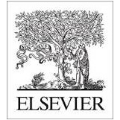Shared folders are still a common practice for granting third parties access to data files, regardless of the advances in data sharing technologies. Services like Google Drive, Dropbox, Box, and others, provide infrastructures and interfaces to manage file sharing. The human factor is the weakest link and data leaks caused by human error are regrettable common news. This takes place as both mishandled data, for example stored to the wrong directory, or via misconfigured or failing applications dumping data incorrectly. We present Data Leakage Prevention FileSystem (DLPFS), a first attempt to systematically protect against data leakage caused by misconfigured application or human error. This filesystem interface provides a privacy protection layer on top of the POSIX filesystem interface, allowing for seamless integration with existing infrastructures and applications, simply augmenting existing security controls. At the same time, DLPFS allows data administrators to protect files shared within an organisation by preventing unauthorised parties to access potentially sensitive content. DLPFS achieves this by transparently integrating with existing access control mechanisms. We empirically evaluate the impact of DLPFS on system's performances to demonstrate the feasibility of the proposed solution.
翻译:共享文件夹仍然是允许第三方获取数据文档的常见做法,而不管数据共享技术有何进步。 Google 驱动器、 Droppox、 Box 等服务机构为管理文件共享提供了基础设施和界面。 人的因素是最薄弱的链接, 人为错误导致的数据泄漏是令人遗憾的共同新闻。 这既属于处理不当的数据, 例如存储到错误的目录, 也属于错误的配置或应用倾弃数据。 我们展示了数据泄漏预防文件系统( DLPFS ), 这是首次尝试系统地保护数据不受错误配置应用程序或人为错误造成的数据渗漏。 这个文件系统界面在 POSIX 文件系统接口顶端提供了一个隐私保护层, 允许与现有基础设施和应用程序进行无缝整合, 仅是增强现有的安全控制。 与此同时, DLPFS 允许数据管理员通过防止未授权的当事人访问潜在敏感内容来保护组织内共享的文件。 DLPFS 通过与现有访问控制机制透明地整合实现这一点。 我们实证地评估 DLPFS 对系统运行状况的影响, 以证明拟议解决方案的可行性。




